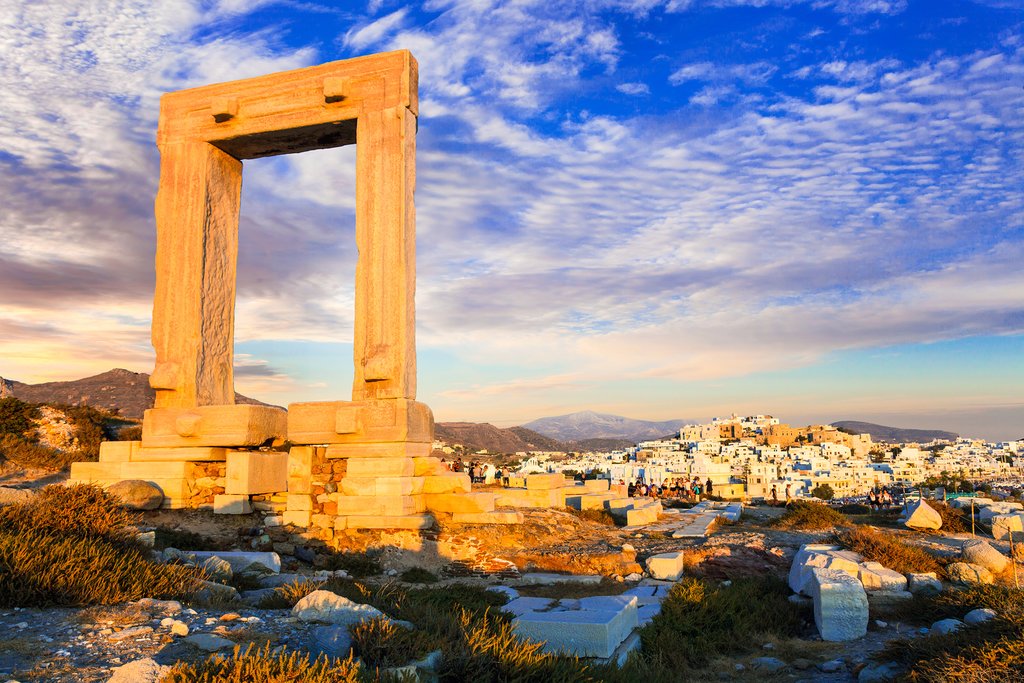Highlights
- Become an expert in traditional paragadi fishing methods in the Saronic Gulf
- Hike the lunar landscape of Volax
- Catch a wave with a surf lesson at Kolymbithra Beach in Tinos
- Work up a sweat in the wondrous Samaria Gorge
Brief Itinerary
| Day | Highlights | Overnight |
|---|---|---|
| Day 1 | Arrive in Athens, Welcome Dinner | Athens |
| Day 2 | Day Trip to Meteora | Athens |
| Day 3 | Fishing Boat Adventure in the Saronic Gulf | Athens |
| Day 4 | Ferry to Tinos | Tinos |
| Day 5 | Volax to Agape Hike | Tinos |
| Day 6 | Surfing at Kolymbithra Beach | Tinos |
| Day 7 | Ferry to Naxos | Naxos |
| Day 8 | Naxos Beaches and Villages Bike Tour | Naxos |
| Day 9 | Horseback Riding in Naxos | Naxos |
| Day 10 | Travel to Chania | Chania |
| Day 11 | Trek Samaria Gorge | Chania |
| Day 12 | Cretan Delicacies Day Trip | Chania |
| Day 13 | Return to Athens, Sunset at Cape Sounion | Athens |
| Day 14 | Visit Mycenae and Nafplio | Nafplio |
| Day 15 | Karathona Beach Kayaking | Nafplio |
| Day 16 | Return to Athens, Depart |
Detailed Itinerary
Day 1: Arrive in Athens, Welcome Dinner
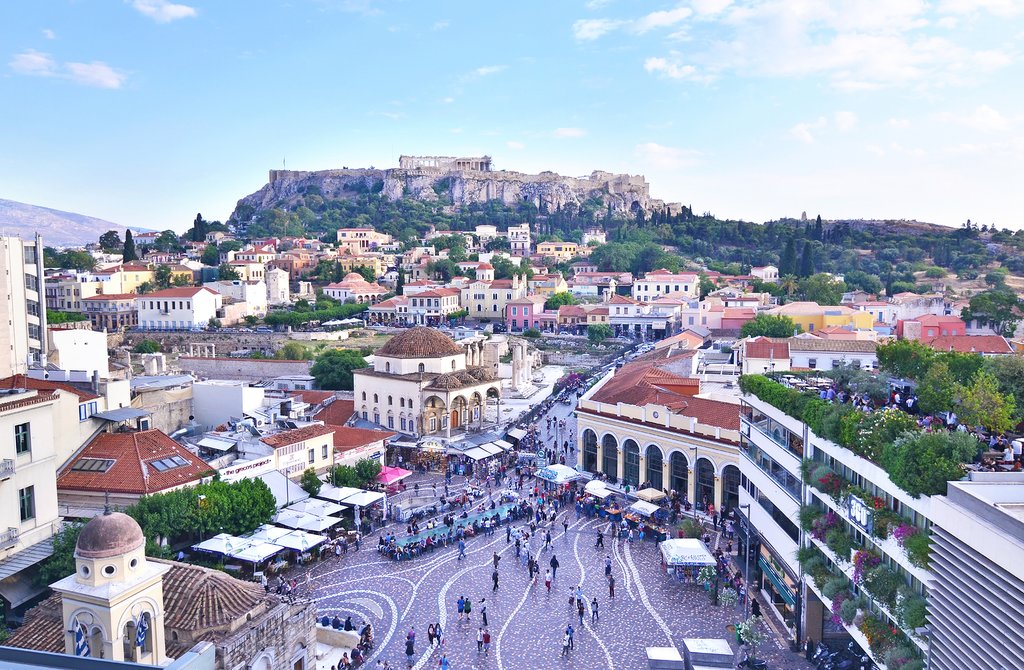
Welcome to Greece! You'll begin your trip in Athens, home to both the iconic Acropolis and so much more. The mythology of this spectacular city precedes it, with towering temples to Classical deities and the ruins of ancient marketplaces rubbing shoulders with lively nightlife, crowded flea markets, and contemporary cuisine. Make the most of your time in the city at some of these spots:
- Check out the views of the can't-miss Parthenon. (Pro tip: The Parthenon is the temple, the Acropolis is the hill.) This temple to Athena has enchanted visitors since its construction was completed in 438 BC. It's probably the first thing that comes to your mind when you think of ancient Greece and is visible from many of the city's high points.
- Stop at the sprawling National Museum for a crash course in ancient iconography. Be sure to seek out the room housing the Antikythera mechanism, essentially an ancient astronomical computer.
- Visit a smaller archaeological site at the Tower of the Winds, then stroll down neighboring pedestrian Aiolou Street to stop at shops and cafes.
- Find your perfect souvenir or sun hat in the busy stalls of the Monastiraki flea market.
In the evening, you'll sit down to enjoy either a welcome dinner with views of the Acropolis or wine tasting in a bar in downtown Athens.
Day 2: Day Trip to Meteora

Travel by train across the Central Greece countryside for a day among the famous monasteries of Meteora. These religious buildings sit atop rock formations that are more than 60 million years old. You'll tread the same paths that monks used for hundreds of years to reach these holy places, perched close to 1,000 feet in the air above the canyons of the Pindos range. Before the paths were constructed, the monastery residents used nets and rope ladders to hoist goods (and sometimes their fellow clergy) to the clifftops.
The roughly five-hour train ride will take you from Athens through the rural landscape to Kalabaka, the town gateway to Meteora. You'll meet your guide and be transferred up to Meteora itself for three hours among the monasteries. You'll see all six of the monasteries, with visits inside one or two of them for a glimpse of what the ninth-century monastic life may have been like. There will also be stops for photos and other detours along the way before your return to the train station and Athens.
Day 3: Fishing Boat Adventure in the Saronic Gulf

Hop onboard with a professional fisherman to get up close and personal with the Saronic Gulf. You'll start in Athens' port suburb of Piraeus in Pasalimani, the port's hub for small fishing boats. Board a kaiki, a traditional fishing boat, where your fisherman guide will teach you all about their fishing techniques. Take in the scenery as you sail out to your first fishing grounds, where you'll observe traditional paragadi fishing methods.
Your second stop will be Fleves island, where you can put these lessons into practice with a provided fishing rod or join the fish instead, with a swim in the clear waters. Lunch will be served onboard (fish included, naturally) before you head back to check the paragadi for any fresh catches. The day's spoils will be divided for you to take back with you and enjoy later at your leisure.
Once you've returned to shore, check out Piraeus in the evening light before you return to the city center. Stroll through Pasalimani, then stay for a drink or two in one of the open-air cafes along the Gulf of Zea.
Day 4: Ferry to Tinos

Take an early ferry to Tinos, one of the most overlooked islands of the Cyclades. Tinos has remained under the radar for many years, overshadowed by its celebrity neighbor of Mykonos and seen mainly as a religious destination. Those who continue to believe that, however, are missing out on an island with fascinating history and culture, winding streets, great outdoor activities, and glittering beaches.
The imposing Panagia Evangelistria should not be overlooked, as Tinos is also known as the island of the Virgin Mary. Its icon is believed to have healing powers, and the annual August pilgrimage is a key part of the island's identity as churchgoers crawl on their knees toward the temple as a sign of piety.
If pilgrimage isn't quite your scene, there are also nearly 80 windmills to be explored, Venetian ruins, hiking at Exomvourgo mountain, and beaches for any moods. Try the island's craft beer from Nissos brewery or sample the cheeses at the shop belonging to the Cheese Cooperative of Tinos. Keep an eye out for the many painted dovecotes around the island as well, small white pigeon homes dotting the countryside of which there are nearly 1,000.
Day 5: Volax to Agape Hike

Take one of the island's top hikes today with your expert guide, experiencing scenery ranging from lunar landscapes to medieval churches. You'll hike for approximately 3.5 to four hours, covering about 4-5 miles (7-8 km) but can extend the experience with an afternoon swim for up to six to seven hours.
You'll start in Volax, where the landscape is covered with large, smooth granite rocks that geologists believe emerged from the sea millions of years ago. In the midst of the rocks, at the foot of Exomvourgo hill, you'll find a petite village. This town has been home to famous basket weavers for centuries, some of whom you may still spot practicing their craft with bamboo, willow, and osier shoots along the town's streets.
Ascend up a path of medium difficulty level past dovecotes and watermills. The trail will lead you to the town of Agape, also the Greek word for love. This Catholic village maintains its medieval influence in its arches, traditional houses, and narrow alleys across the multi-level town.
End in Kolymbithra for a swim to cool off after your exertions. You'll also enjoy lunch at a taverna Kalloni village, with dishes such as froutalia (an egg dish with sausage and potatoes), roast beef with tomato sauce, local cheese, louza cured ham, and other seasonal touches.
Day 6: Surfing at Kolymbithra Beach

Head out to Kolymbithra beach for some surf lessons and seaside chic surroundings via your own transportation method or a transfer from your hotel. This protected cove on Tinos's northern coast is one of the island's best spots for water activities. You'll receive a 90-minute lesson from an experienced surfer who will have you hanging ten in no time.
If you aren't interested in surfing, stand-up paddleboarding is also available. Stick around to practice your new skills for as long you like, or relax under the mushroom-shaped umbrellas. The beach is lined with tavernas using ingredients grown or caught on the island.
Take a historical stop at the sanctuary of Poseidon, once one of the god's most significant ancient sanctuaries and also home to worship of Amphitrite. The archaeological site is located near Kionia beach and includes the main temple along with baths, an altar, and a fountain.
Chat with a local specialist who can help organize your trip.
Day 7: Ferry to Naxos

Time to ferry over to bustling Naxos after breakfast. With an active main town where you can shop and admire the Venetian architecture, a historic Kastro (castle) area, and expansive beaches, the island offers opportunities for both laidback relaxation, as well as water or land activities. The rest of the day is yours to unwind as you choose. Try out some of these options:
- Hike up to the summit of Mount Zas, the mythological childhood home of Zeus, the ruler of the gods, and the highest point in the Cyclades.
- Head inland to the town of Chalki, home to the island's oldest market and a petite, shady square perfect for whiling away the afternoon. Stop at the kitron distillery to sample the local liqueur and learn about its distillation process over the years.
- Visit the Temple of Demeter at Sangri on your way. Multiple deities of fertility were worshipped here, particularly the goddess Demeter. The temple was constructed in 530 BC, during the tyranny of Lygdamis, and represents a precursor of classical Athenian architecture.
- Stroll to the Portara, the entrance to the Temple of Apollo. Construction on the temple began in the sixth century BCE but was never finished, but the still-standing entranceway has become one of the hallmarks of the island. You can find it on the islet of Palatia, just over a causeway from the heart of Naxos Town (Chora).
For dinner, wander up the hill through the streets of the Kastro neighborhood to pick out your favorite of the area's tavernas, where you can sample the island's fresh produce in its best forms.
Day 8: Naxos Beaches and Villages Bike Tour
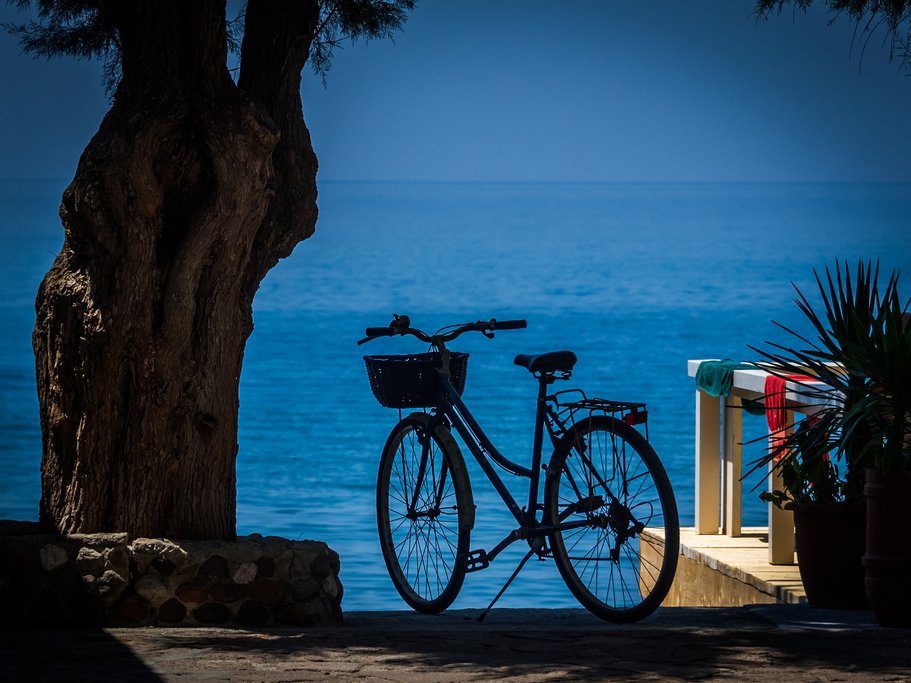
Discover Naxos's hidden spots on today's two-wheeled tour. You'll bike with an expert guide through the villages and attractions on the west side of the island. The western coast is also home to some of the island's best-known beaches, including Agios Prokopios, Agia Anna, Plaka, Orkos, and Mikri Vigla.
On your way back, you'll see the villages of Vivlos, Agios Arsenios, and Glinado. The beginner-friendly route covers roughly 12 miles (20 km) and will take you about 2.5 hours.
Spend the rest of your day exploring the main Naxos Chora, especially the Kastro district. Wind up the narrow streets to the Venetian Castle in the center of town, stopping at the neighboring Catholic church, Ursuline school, and Archaeological Museum along the way. Even the houses are part of the experience, once home to the descendants of Duke Venetians.
Day 9: Horseback Riding in Naxos

Get a different perspective on the island from atop one of its resident horses. The stable will work with you to create a ride that suits your age and skill level to maximize your experience and trail route.
A trip to the village of Apiranthos is a potential ride highlight. Also known as the "marble village" due to its white architecture and marble stone streets, this mountainside spot offers inland views and a slew of museums and crafts to peruse. Listen for the local dialect among the residents, which has remained distinct from the rest of the islands.
Day 10: Travel to Chania
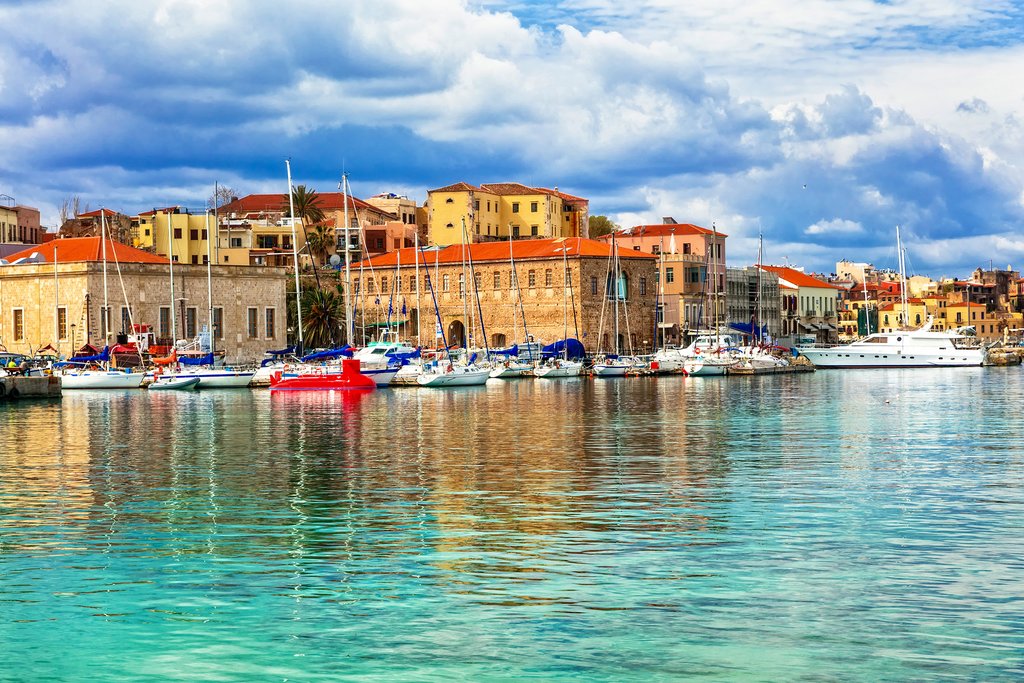
Today, you'll continue onward to Chania, a city (and region) on the northwest coast of Crete. Chania itself is the second largest city in Crete and one of the most scenic spots on an island with stiff competition for that title. Life in this former Venetian city revolves around its charming 14th-century harbor, narrow streets with winding alleys, and colorful architecture influenced by past Ottoman and Egyptian eras.
While you're exploring the area, don't miss some of these spots:
- The elevated neighborhoods of Topanas, Splantzia, Kolombo, and Kasteli for panoramic harbor views, Cretan taverns, and architectural history. You can see the ruins of the Minoan city of Kydonia and high walls of former Venetian moats integrated into the city.
- The Municipal Market of Chania and neighboring Municipal Garden to enjoy a coffee amid the shade of the trees or garden clocktower.
- The Botanical Parks and Gardens of Crete to enjoy Cretan nature at its finest. The special micro-climate formed at this specific area allows plants from three different climate zones to grow in the park.
- The olive-oil-producing region of Vouves, to the west of the city, complete with a museum and one of the oldest olive trees in existence.
- Falassarna and Elafonissi beaches, also to the west, where you can find solitude on the sands.
Top it all off with a sunset drink on the rooftop at trendy Pallas or visit Cafe Koukouvaya for a pastry and a view of Chania town and harbor.
Day 11: Trek Samaria Gorge

After breakfast, you'll be picked up at your hotel nice and early to explore one of Crete's natural wonders. Set amidst the scenery of the White Mountains is the popular hike through Samaria Gorge. The trek takes approximately five hours to cover the gorge's approximately 11 miles (18 km), most of which are downhill and during which you'll spot flora and fauna of all kinds. As your trail nears its end, you'll descend a gentle slope down to the peaceful beach at Agia Roumeli on the turquoise Libyan Sea where you can take a dip and wash off the trail dust.
There will be time to linger on the sand and relax before you wrap up the outing with a boat trip to Chora Sfakion, where your coach will be waiting to return you to your hotel in Chania.
Day 12: Cretan Delicacies Day Trip

Meet the farmers and food specialists of Crete on today's tour. Your guide will take you out to the traditional village of Vamos and the surrounding area to meet these creators and sample their products.
You'll start at the local olive oil factory, where you'll learn about its production process and sample some of the fresh oil, along with an explanation of what distinguishes Cretan virgin olive oil from other oils.
Next up, the local cheesemaker. Crete is known for its graviera cheese, a slightly sweet, hard sheep cheese. You may watch the expert on duty as he makes graviera and teaches you about the cheese-making process, with samples of different varieties including graviera, anthotyros, and myzithra. It's also time for your first raki of the day, a grape-based spirit that's also Crete's national drink.
Head to the 14th century Byzantine church of Saint Nicolas on your way to the next stop to take in its frescoes and architectural features. Afterward, you'll arrive in the village of Hiliomoudou, where one of the few hand producers of sheep and goat bells practices his craft. You can watch him work and learn how to distinguish between the sounds of sheep and goat bells while sipping your second raki.
End as you began at a second olive oil press, this time home to both the rarer organic olive oil and the elusive Cretan kri kri goats, a species only found on this island. See if you can spot them as you sit at the taverna and enjoy a traditional lunch with all the ingredients you've just observed, before heading back to Chania.
Day 13: Return to Athens, Sunset at Cape Sounion

Return to Athens in the morning. After you've settled back into the city, you'll be transferred down to the Athenian Riviera, full of both history and stunning island views. Your adventure will take you along the coast to visit the Temple of Poseidon, while being provided with historical background on the way. The views overlook the Saronic Gulf, with one of the best sunset views Greece has to offer. Sip a complimentary beverage and take in the sunset while you listen to music and immortalize the moment with a Polaroid-style photo.
You'll be transferred back to your lodging in the evening just in time for a late (Greek-style) dinner. Or, if you're not ready to call it a night, you can request a drop-off at some of the most popular beach bars to dance until the sun comes up.
Day 14: Visit Mycenae and Nafplio

Start the day early with a guided trip back to a true classic. You may recognize Mycenae from its role in Homer's Iliad: It was home to the famous Helen, whose Mycenean husband King Agamemnon led his people to war when she left him for Paris of Troy. See its Cyclopean walls, whose construction method is still a mystery. They got their name due in part to the belief that only the mythical Cyclops would have been strong enough to lift their boulders.
You'll pass through the Lion Gate with your guide to enter the ruins of the city, wandering past the tombs of Aegisthus and Clytaemnestra and the Treasury of Atreus.
You'll go on to Nafplio, one of the prettiest seaport towns in the Peloponnese peninsula and once believed to have been founded by the son of Poseidon. The town was the first capital of the new Greek state after the war of independence in the 1800s. You'll take a guided stroll through the old town, where you'll pass statues honoring significant figures from Nafplio's history, Ottoman fountains, and Venetian architecture along the winding streets, topped off by the Bourtzi Castle in the middle of the harbor.
Later, don't miss the climb up 1,000 steps to see the view from the Palamidi Castle. Spend a relaxing evening wandering the quiet streets or walking along the waterfront.
Day 15: Karathona Beach Kayaking
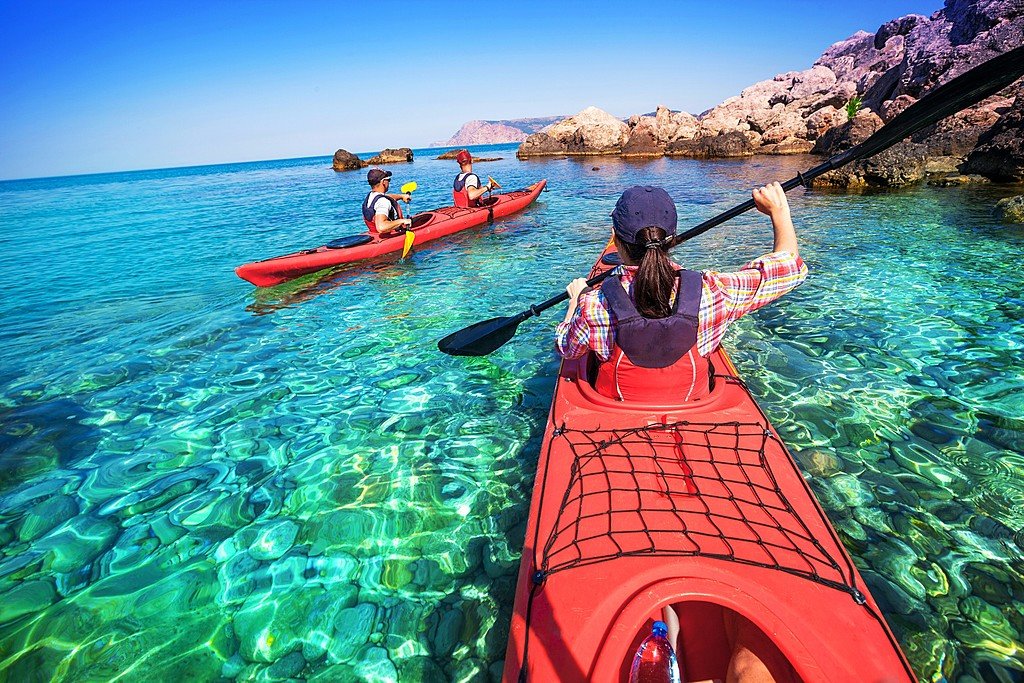
Swap your pedals for paddles with a four-hour kayak tour in the waters of the gulf. Get in the water at Karathona beach to circle some of the bay's best spots. You'll get a perfect distance view of the Palamidi Castle before you come in for a visit to Bourtzi Castle, complete with panoramic perspective on the city. Take a break for fruit and photos in a small church along the way.
Once you've dried off, head back into town for an evening wander. See if you can find P.D.O. olive oil from Lygourio, near Epidaurus, to bring home the best of a Greek favorite. When hunger strikes, seek out fresh local seafood on coastal Bouboulinas and Miaouli streets or try the local specialty dish of bogana, which features a hearty mix of lamb and potatoes.
Day 16: Return to Athens, Depart
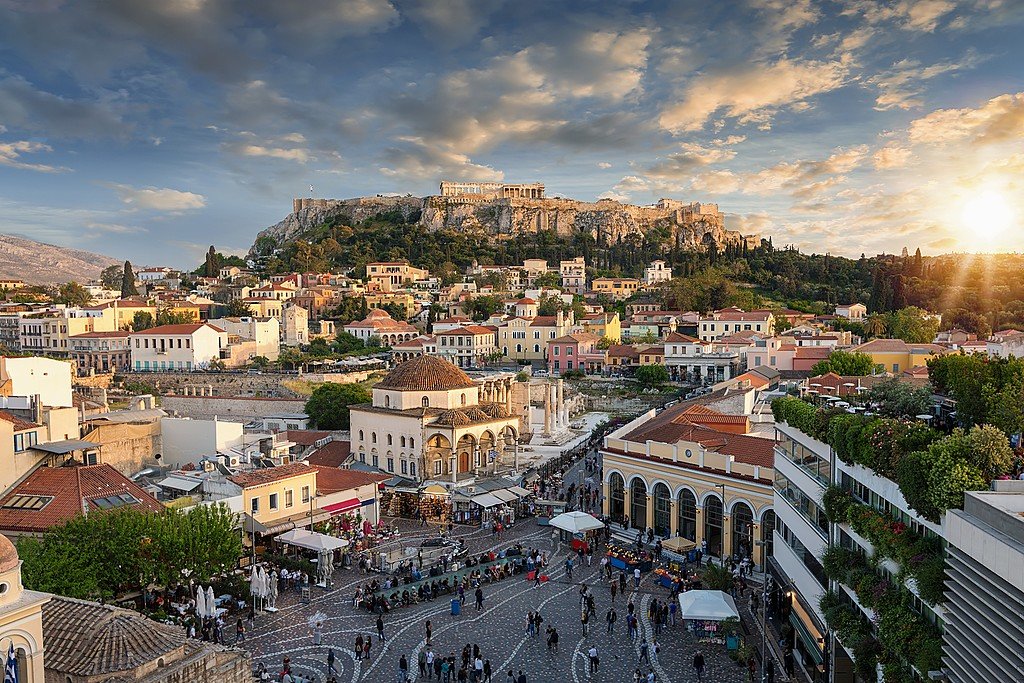
Time to say farewell to Greece. You'll head back to Athens after breakfast to catch your flight, either home or onward to your next adventure.
